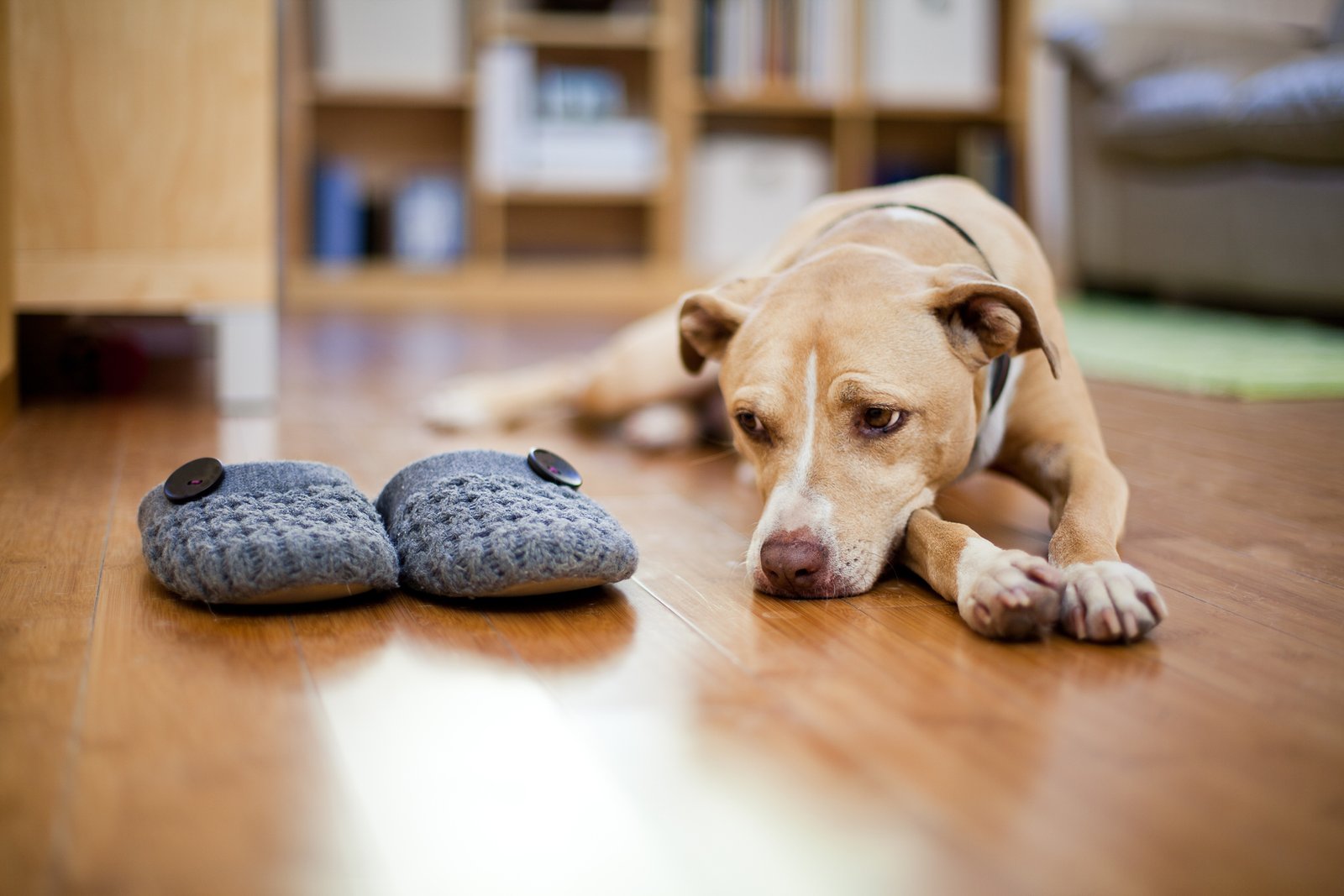As pet owners, ensuring the well-being of our furry friends is paramount. When a dog loses its sight, either through age or illness, it can be a distressing time for both the animal and its owner. A blind dog requires special attention, and one of the biggest challenges is figuring out how to leave a blind Leaving a Blind Dog Alone safely. This article will cover essential tips, strategies, and considerations to ensure your visually impaired dog remains comfortable, confident, and secure when left by itself.
Understanding Blindness in Dogs
Blindness in dogs can occur due to several factors, such as age, genetics, disease, or injury. While some dogs are born blind, others may gradually lose their sight as they age, a condition known as progressive retinal atrophy. Regardless of the cause, a dog’s blindness does not diminish its quality of life if given the proper care and attention. Blind dogs rely heavily on their other senses, particularly smell and hearing, to navigate their environment.
Is It Safe to Leave a Blind Dog Alone?
The short answer is yes, but it depends on a few factors such as the dog’s personality, the environment, and how much preparation you’ve made for its safety. Some blind dogs are confident and adaptive, while others may struggle more with anxiety and disorientation. Before leaving a blind dog alone, you need to evaluate its comfort level and ensure that it is in a familiar, safe space.
Steps to Ensure Your Blind Dog’s Comfort When Left Alone
Here are some practical steps to help ensure your blind dog is comfortable and safe when you’re not around.
1. Create a Safe Environment
Before leaving your blind dog alone, ensure that the environment is as safe as possible. Since the dog won’t be able to see hazards, you need to eliminate any risks. Keep walkways clear of clutter, remove sharp objects or corners, and block off stairways with baby gates. You can also use textured mats or rugs to help the dog navigate the space through touch.
2. Consistency is Key
Blind dogs thrive on routine. Consistency in the layout of their surroundings is crucial for building their confidence. Avoid rearranging furniture or frequently changing the location of food and water bowls. When things remain in the same place, your blind dog will begin to map out its environment using memory and spatial awareness.
3. Introduce New Sounds
Since blind dogs rely on their hearing, you can use sound cues to help them feel more grounded in their environment. For instance, you could use wind chimes near doors or different flooring textures in various rooms. Some owners also use music or white noise machines to create a calm atmosphere when leaving their dog alone. If the dog hears familiar sounds, it’s more likely to feel relaxed.
4. Use Scent as a Guide
A blind dog’s sense of smell is its strongest asset. Use scent markers like lavender or chamomile at important locations, such as near the food bowl or by the door leading to the yard. You can also leave a piece of your clothing in the dog’s bed to comfort it when you’re not home.
5. Gradual Independence Training
If your blind dog is particularly dependent on you, leaving it alone for long periods can be stressful. Instead, introduce independence gradually by leaving the house for short intervals and slowly increasing the time away. Start with five or ten minutes and gradually work up to longer periods.
6. Interactive Toys and Mental Stimulation
Just like any other dog, a blind dog needs mental stimulation to stay happy and healthy. Leaving interactive toys like treat-dispensing puzzles can keep your dog occupied while you’re away. These toys engage the dog’s sense of smell and touch, providing a sense of accomplishment and distraction from its blindness.
When You May Need Help
In some cases, it might be beneficial to hire a dog sitter or ask a friend or neighbor to check on your dog during longer absences. Blind dogs may experience increased anxiety if left alone for too long, especially if they are new to being independent.
Conclusion
Leaving a blind dog alone may require some preparation, but it is entirely possible with the right strategies. By creating a safe, consistent environment and gradually fostering independence, your blind dog can thrive even in your absence. Remember that patience and understanding are key in helping your dog adjust to its new reality, and with the right support, your blind dog will continue to live a happy and fulfilled life.

